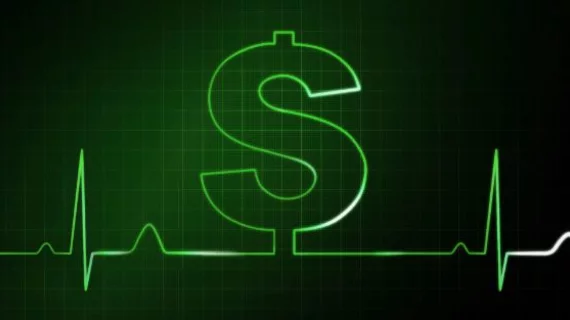Hypertensive patients collect $1,920 more in annual healthcare expenditures compared to healthy individuals, according to a study published online May 30 in the Journal of the American Heart Association.
Patients with high blood pressure, compared to their non-hypertensive counterparts, have 2.5 times more in inpatient costs, double the outpatient costs and nearly triple the amount of prescription medication expenditures, the research suggests.
“Hypertension is recognized as a tremendous threat to medical and financial health,” wrote lead author Elizabeth B. Kirkland, MD, MSCR, with the Medical University of South Carolina in Charleston, and colleagues. “National medical costs associated with hypertension account for about $131 billion, or over 3 percent of the $3 trillion U.S. national healthcare expenditure. While the incremental cost associated with hypertension for U.S. adults has remained steady around $2,000 per year, it is promising that expenditures seem to be shifting from inpatient to outpatient settings.”
Kirkland and colleagues reviewed data of more than 224,000 adults from the 2003-2014 Medical Expenditure Panel Survey. Almost 40 percent of the study cohort had high blood pressure. The researchers calculated the estimated annual expenditures for hypertensive patients and measured trends in expenditures.
The researchers conducted their data review using the 2014 hypertension guidelines that defined high blood pressure as 140/90 mmHg or higher. Tighter blood pressure guidelines of 130/80 mmHg were introduced by the American Heart Association and the American College of Cardiology in 2017.
“The new lower definition of high blood pressure will increase the number of adults in the hypertensive population,” Kirkland said in a statement. “This may decrease the average cost of hypertension for individual patients while increasing the overall societal costs of hypertension.”
Kirkland et al. noted a shift toward increased expenditures in an outpatient setting rather than an inpatient one—which points to a larger trend in providing care in settings more accessible to patients and could also reflect the expansion of preventative care until the Affordable Care Act.
“As overall U.S. healthcare costs continue to rise, it is imperative that we identify effective strategies to improve control of chronic diseases that are associated with high annual expenditures,” the researchers wrote. “For hypertension, these efforts may focus on expanded access to preventative care services and continued innovation for non–office-based care delivery such as telemonitoring of home measurements and 24-hour ambulatory BP monitoring.”

